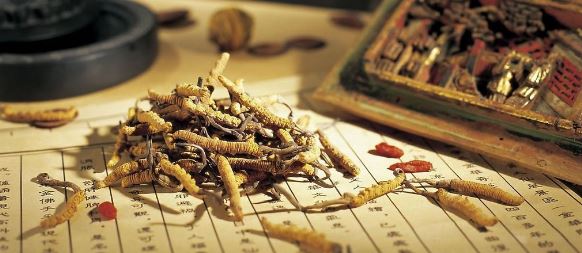
TCM (中醫) stands for Traditional Chinese Medicine. So my curiosity about TCM is relighted because Chinese experts are sharing their coronavirus treatment with the world. TCM is often mentioned in these experience talks.
I don’t have any medical background, nor did my parents. But TCM has been practiced in China for thousands of years and many ordinary Chinese people, including my late mother, found more benefits from TCM than from Western medicine. I remember when I cared for her fourteen years ago, I was introduced to a plethora of TCM names in Chinese. When I wrote my memoir Golden Orchid, one of the challenges was my translation of TCM into English. Back then, few TCM journals and Chinese original texts were translated into foreign languages. While researching for my book project, I could have written my own dictionary of TCM alongside my memoir.
It was a fun journey to find my way to explain in my book what is qi, and what are the more familiar yin and yang to English readers. With my finesse in bilingualism, I could detail the more complicated TCM treatment for intestinal diseases. I’ve been asked often during my book presentations about what I think of TCM. I reiterate that TCM is a magical field of medicine if you believe in its efficacy and are wholeheartedly devoted to explore its breadth and depth. By studying TCM, one will learn not only medicine, but also ancient Chinese literature, language, history, geography and philosophy.
When SARS hit China in 2002-2003, TCM was used to treat patients. Seventeen years later, the cousin coronavirus of SARS, namely, COVID-19 or novel coronavirus, hit China. TCM is in use more extensively than ever before. About 92% of the confirmed cases adopted TCM treatments, especially in the epicenter Wuhan, Hubei Province. China’s National Health Commission suggested a list of Chinese herbal prescriptions for use on patients, depending on which of the four Chinese medicine categories their conditions fell into—“damp, hot, toxic, bruised.” Precisely, there’re six TCM categories to describe the cause of COVID-associated pneumonia: cold (寒), damp (濕), hot (熱), toxic (毒), deficient (虛), bruised (瘀).
As we hear a lot about shortage of ventilators in hospitals around the world, it’s easy for medical layman like myself to misconceive the powerful effect of a ventilator on critically ill respiratory patients. I had thought ventilators saved lives until I read an article from NPR. Several small studies from the US, China and Europe have found that ventilators are no panacea for critically ill COVID-19 patients. The tough news is most coronavirus patients who end up on ventilators go on to die.
I have a personal experience with the use of a ventilator at the dawn of my late father’s death. He had acute respiratory difficulty, and I was told by his physician that if a patient, who was as weak as my father, was dependent on a ventilator, he might find it more difficult to be weaned from the machine. For that reason, I decided not to let my father undergo the travail. Ventilators are successful when used to treat common forms of pneumonia. But in treating coronavirus patients with ventilators there’s risk.
According to a TCM doctor from China, ventilators could be the culprit for creating a high mortality rate. In the case of a viral attack, it’s not only the oxygen that gets pumped into the blood stream by a ventilator, it is the coronavirus as well which causes sepsis. The coronavirus often does a lot more damage to a person’s lungs than pneumonia associated with the flu.
In a normal, non-COVID-associated scenario, when ventilators are in used, patients receive antibiotics in the process of recovery. Antibiotic drugs usually kill bacteria but they aren’t effective against viruses. I guess that’s why the demand for blood donations from COVID-recovered patients is high because antibodies in their plasma can attack the virus.
Under the microscope, a virus is between 100 and 500 times smaller than bacteria. TCM herbal preparations such as Ma Huang Tang (麻黃湯) and Ma Huang Xi Xin Fu Zi Tang (麻黃細辛附子湯) are recommended to COVID-patients in China to circulate the qi of the lungs and restore yang. If you read the 3rd century classic text Shang Han Lun (傷寒論), you’ll know more about the TCM treatment on cold damage diseases, including viral infections.
Sadly to note, the West looks up to South Korea as a leader in efficiently responding to the COVID-19 pandemic. And yet, South Korea emulated China’s disease control measures closely so that it was also able to quickly contain the spread of COVID-19 by testing, quarantine, tracking and using traditional Chinese herbal preparations in the treatment. Why doesn’t the West learn from China in the first place? It’s about ideology. Sharing the same fate as the Olympic Games, global public health is politicalized by leaders who are fixated on ideological dominance. The WHO’s daily tally of global COVID-19 cases and fatalities is like the Olympic medal table but with no honor whatsoever, except for a sense of awe and grief.
It took more than two months for the WHO and the US CDC to make a U-turn on wearing masks. I don’t think China’s or even South Korea’s TCM treatment will be adopted by the West, especially in the US, the COVID-19 infection leader in the world. The Cold War-style ideological battle has not dissipated in the 21st century. On the contrary, the overriding sentiments are inflamed by the partisan leadership in the US. I think when it comes to foreign ideas, China is more adaptable than the US. China is good at incorporating new ideas with its own development. The US is skeptical of almost anything foreign, especially ideas from China whose ideology is starkly different from the US. Alas, above all else, besides ventilators, TCM may be worth a try for the critically ill COVID-19 patients in the US.

